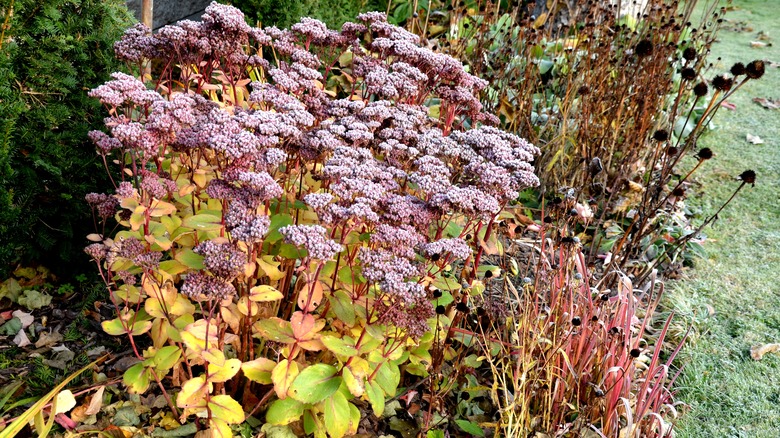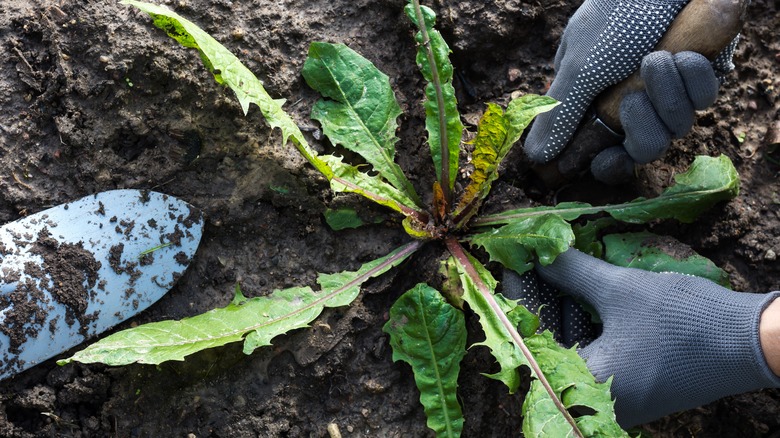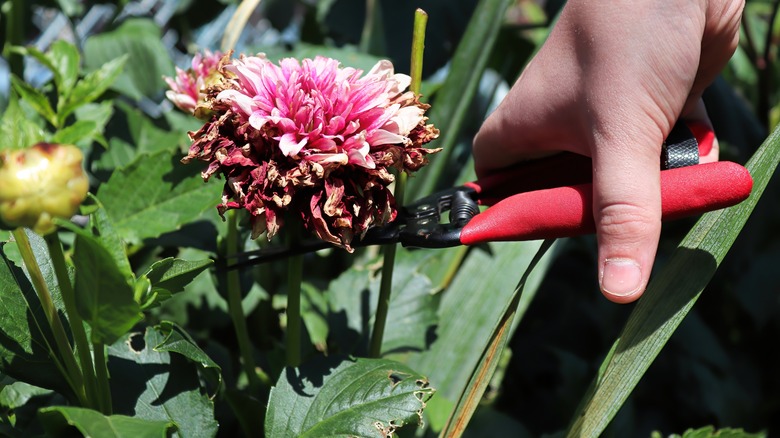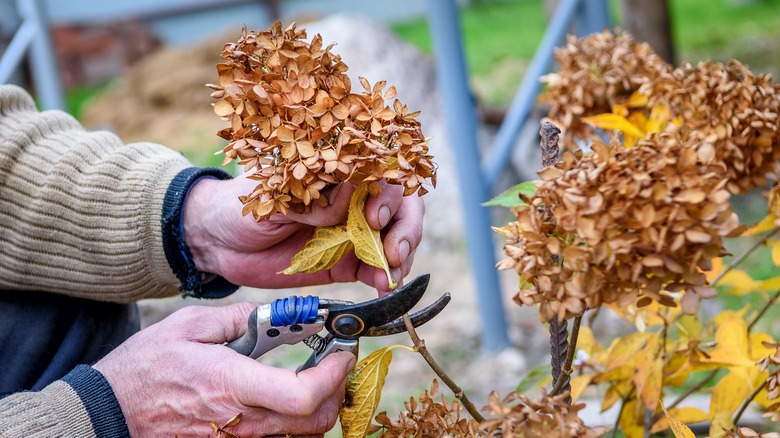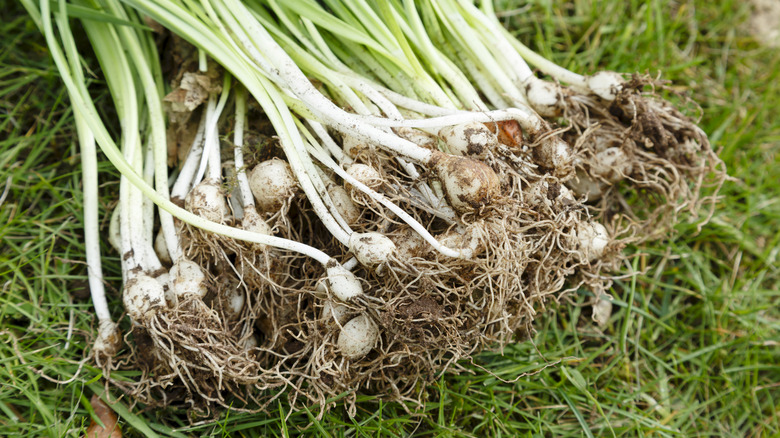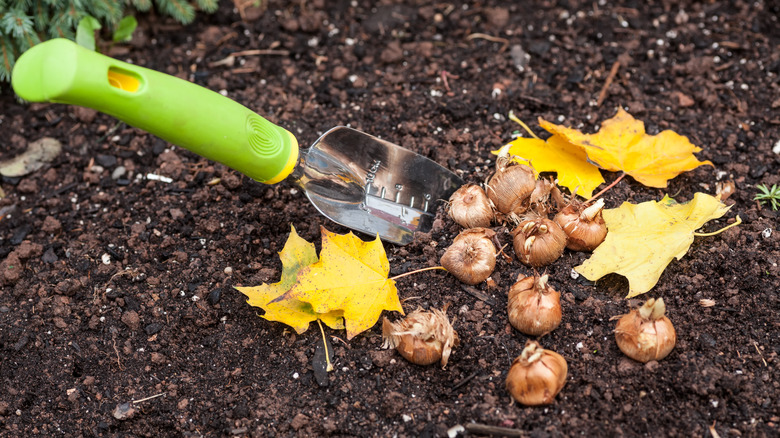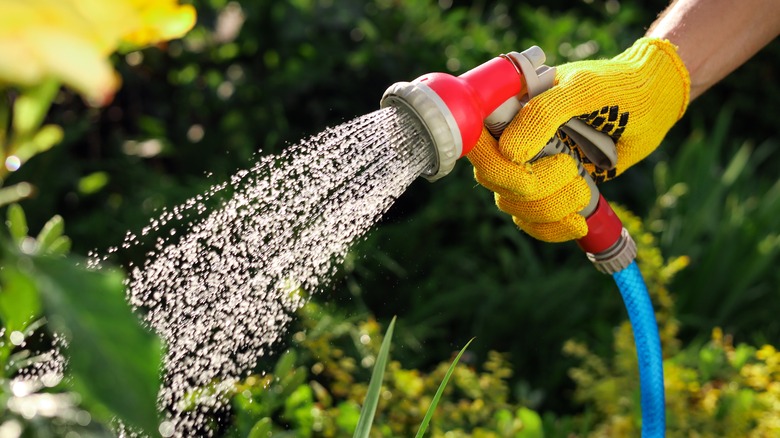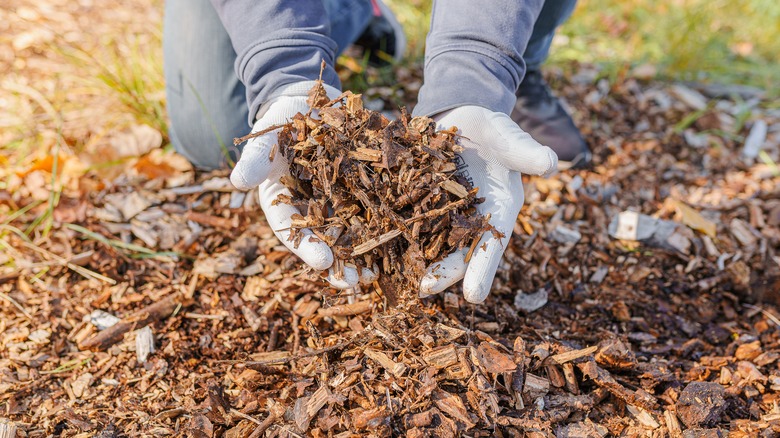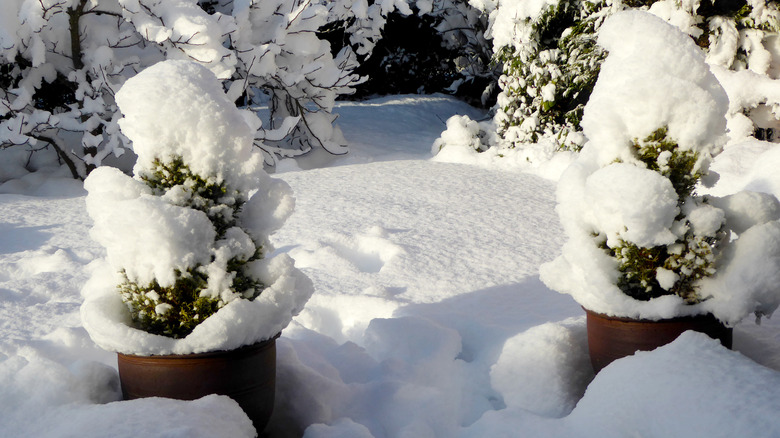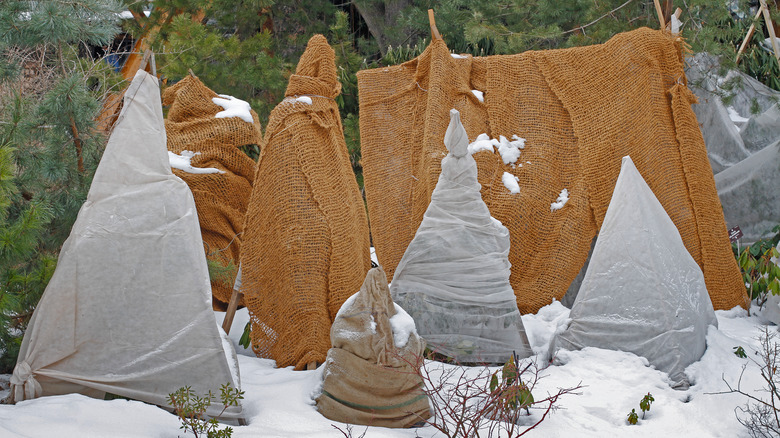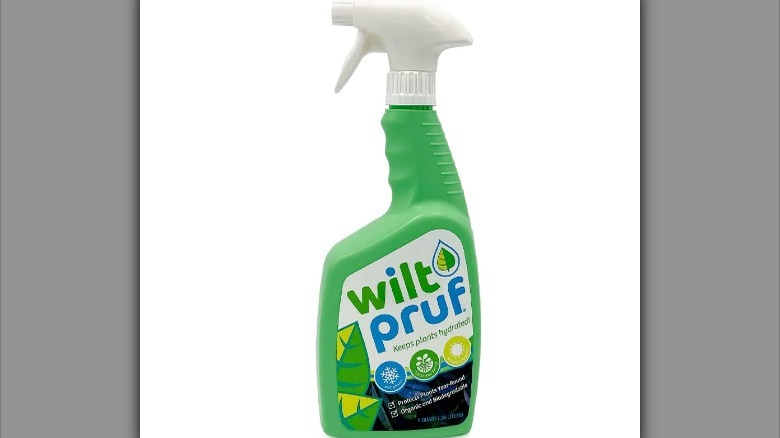Simple Steps To Winterize Your Flower Beds Outside Your Home
We may receive a commission on purchases made from links.
While plants typically don't need much care during winter, preparing your flower beds before the cold weather strikes is important. According to High Country Gardens, the right time to begin these preparations depends on where you live. Those who reside in a cooler climate and experience a good amount of snow should start earlier in the fall, while those with warmer weather can wait until right before winter. It all really depends on when the ground typically freezes in your area because you want to act before this happens.
Perhaps you're wondering why these tasks need to be completed in the winter and can't happen in the spring. This is because if you leave your plants as is, they may be susceptible to disease, grazing animals, damaging insects, dry weather, strong winds, and snow. Further, preparing your garden can give it a more aesthetically pleasing look during winter. Below, you'll discover the ten steps to winterizing your flower beds.
1. Remove weeds
The first step is to remove pesky weeds. According to LawnEQ, these can either be removed by hand or with the help of a weed-specific herbicide. You should be the most concerned about removing those with deep roots or species that will grow back every year.
2. Get rid of annuals
The next step is to remove any annuals, which will protect your plants from disease. White Flower Farm says that they typically wait until after the first frost to complete this task since the annuals will appear damaged and be easy to locate.
3. Prune perennials
Next, cut your perennials down to about 3 to 5 inches above the ground to protect them from disease and insects, per This Is My Garden. This task can be completed after the first frost kills some of the plant, which typically occurs later in the fall.
4. Give them room to grow
Additionally, you also need to divide your spring and summer blooming perennials, which allows them to get more nutrients and will provide you with more plants in the spring. The University of Minnesota Extension says to do this when the weather is overcast, and the soil is moist to keep the plants from drying out.
5. Plant winter bulbs
If you want to be welcomed into spring with beautiful flowers, the end of fall is the perfect time to plant your winter bulbs, such as daffodils, snowdrops, and tulips. When planting these, Almanac says to place them in partially sunny areas with the point of the bulb facing upwards.
6. Water regularly before winter hits
After the ground freezes, plants are just about impossible to water. Therefore, to ensure they stay moist throughout the winter, give them water until the cold weather hits. Today's Homeowner says to continue watering the soil as long as the temperature is above 40 degrees Fahrenheit and there's no frost.
7. Add organic mulch
Organic mulch, which can consist of things like wood chippings, leaves, pine needles, and grass, prevents weeds from growing, keeps insects away, contains moisture, and regulates the temperature of the soil, per Kellogg Garden Products. It also breaks down naturally and provides your plants with extra nutrients.
8. Wrap twine around shrubs
Those who live in snowy climates may benefit from wrapping twine around their shrubs. This is because large amounts of snow could cause the branches to droop, separate, and possibly break off. Torchwood Landscaping says to start at the base of the plant and spiral the twine upwards.
9. Cover in burlap
Another way to protect shrubs and plants is by covering them in burlap or another airy material, which will minimize wind and sun damage. However, Midwest Gardening says never to use plastic, as this can create extra moisture and damage the plant.
10. Apply an anti-desiccant spray
Finally, some also spray their plants with anti-desiccant spray, which keeps them from drying out. This should be applied on a day when the temperature is below 50 degrees Fahrenheit but not too cold, per American Tree, Inc. Further, ensure you only use this on days when precipitation isn't expected.
